Review: ZTE Grand X 4 for Cricket Wireless
Dec 21, 2016, 8:30 AM by Eric M. Zeman
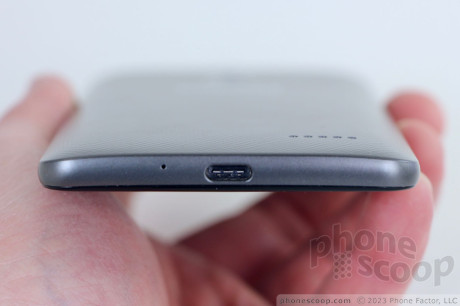
ZTE's latest low-cost Android smartphone for Cricket Wireless is the Grand X 4. This phone is well made, but offers middling specs and performance. If you're on the hunt for a bargain, the Grand X 4 may not fit the bill. Read Phonescoop's full report to find out why.
Is It Your Type?
The ZTE Grand X 4 is a mid-range offering in Cricket's lineup of handsets. This Android phone boasts a solid spec sheet for the price and is wrapped up in a sturdy shell. If you're on a budget and prefer prepaid carriers, the ZTE Grand X 4 is a reasonable option from Cricket.
Body
The Grand X 4 looks a lot like ZTE's other mid-range handsets. It's a black-and-gray slab with a glass front and plastic rear shell. It's not totally generic, but it's not exactly brimming with personality, either.
The shape of the Grand X 4 is a familiar one. ZTE selected 2.5D curved glass to form the X 4's face, which helps a lot. The curved edges of the glass give the front a friendly profile. The rest of the chassis is a single piece of plastic. The shell forms the entire rear panel and all four side edges of the phone; the glass is fitted within. The gray shell has a nice crisscrossed texture to it. Some chrome-colored accents help complete the appearance by throwing in a hint of eye-catching sparkle.
The Grand X 4's 5.5-inch display means the phone is rather large. It's close in size to the iPhone 7 Plus and Pixel XL, which both have the same screen size. I'm glad the X 4 isn't too thick. ZTE's decision to curve the rear panel and taper it as it reaches the sides was a wise one. The phone doesn't feel absolutely huge, but people with small hands or those who prefer smaller phones may find the Grand X 4 too large. I had no trouble putting the phone in my pocket, and yet I always knew it was there.
ZTE used good materials to build the Grand X 4. Nothing about the phone feels flimsy or weak. The glass is installed tightly into the plastic chassis; the seams are even all the way around. Since the chassis is a single piece of material, it is incredibly strong. There's no flex to the phone at all. The Grand X 4 may be affordable, but that doesn't mean it's cheap.
The X 4's face is rather plain. It's all black, with few design elements to dress it up. The bezels are rather thick. I wish the display blended in seamlessly with the glass around it; it stands out. The user-facing camera is clearly visible off to the right of the ZTE logo. Three capacitive buttons line the bottom of the phone. Like many ZTE handsets, the buttons consist of a small, circular icon in the center for the home button, and two smal dots to either side for the back and app-switcher functions. They glow a nice blue so you can find them in the dark. The buttons work as they're supposed to.
You'll find the screen lock button and volume toggle on the right edge. These buttons are covered in a chrome paint so they stand out visually. The lock button's profile is very good, making the key easy to find by feel. It has very good travel and feedback. It has a very fine ribbed texture to it. The volume toggle resembles two screen lock buttons stuck together, but with a smooth texture. I wish the volume toggle were a little bit longer, which might make it easier to tell up from down. Better yet, I wish it had nubs on the up/down buttons. I sometime found myself raising the volume when I meant to lower it and vice versa. That said, travel and feedback is quite good.
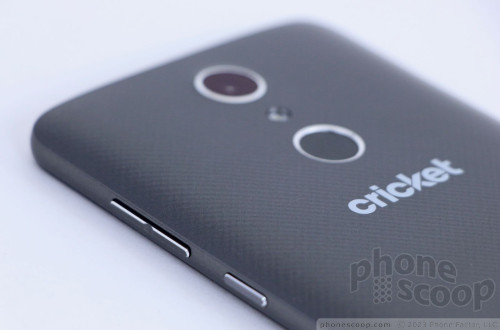
The card tray is slotted into the left edge of the phone. It accommodates both a SIM card and a microSD memory card. The tray is mostly metal, so it doesn't feel flimsy. You'll find a standard 3.5mm headset jack on the top edge and a USB-C port on the bottom. The USB-C ecosystem is finally beginning to pick up a bit of steam, but it still may be harder for you to find cables and other accessories to work with the Grand X 4.
I like the treatment of the rear panel. The patterned texture is something you don't see on phones as much as you used to. The Grand X 4's backside has a nice curve to it. The camera, flash, and fingerprint sensor are a finely balanced trio of elements. The camera module and fingerprint sensor are small round circles rimmed in chrome, which helps them stand out. The camera module is raised perhaps one millimeter, while the fingerprint sensor is indented perhap one millimeter. You can easily tell them apart by feel. Cricket's logo is painted on the plastic.
You can't remove the Grand X 4's rear panel, which means battery is sealed inside. That might be a dealbreaker for some.
Overall, ZTE did a fine job with the Grand X 4. I wish it had a bit more visual appeal, but you can't fault the build, quality, or functionality of the hardware.
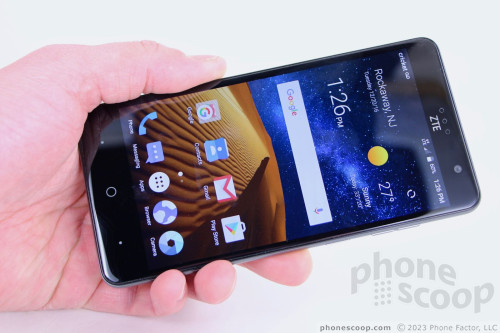
Screen
The Grand X 4's 5.5-inch screen offers 720p resolution, which is what I'd call the bare minimum for a display this size. Words and icons are noticeably less sharp than on higher-end phones with 5.5-inch screens. Don't expect to use the Grand X 4 for virtual reality. However, brightness is excellent; the display pushes plenty of light to your eyes, and it's clearly visible outdoors under bright sun. Color representation is accurate, and viewing angles are decent for this type of screen. Though I wish it had higher resolution, the Grand X 4's display is certainly good enough considering the price point.
Signal
Cricket Wireless operates on AT&T's network. The Grand X 4 performed about on par with other Cricket phones I've tested in recent months. I was able to consistently connect all calls, even under poor signal conditions, on the first dial. The phone held onto calls firmly at highway speeds. The X 4 didn't miss or drop any calls while I reviewed it. The Grand X 4 performed as fast as it is allowed to on Cricket's LTE network (Cricket limits speeds to 8 Mbps). Data performance was good enough to handle low-key social networks such as Instagram and Twitter, but streaming YouTube and Spotify content via LTE was sometimes choppy.
Sound
The Grand X 4 is a middling voice phone. It's just loud enough that I was able to hear calls most places I took the phone. City streets were often a bit too much, but coffee shops and the car weren't. I did have to keep the volume set all the way up at all times. Clarity is a bit of a different story. The earpiece produces choppy sound, for sure, especially when you crank the volume. It's uneven and distorted. People I spoke to through the Grand X 4 said I sounded "broken up."
The speakerphone takes things down a step. It's not quite loud enough, and it's even less clear than the earpiece. This means calls are harder to understand all around. The speaker generates enough volume for use at home or the office, but it's barely adequate for the car. The distortion could be mitigated a bit by turning down the volume. Sadly, that makes calls all but unhearable.
Alert tones are loud enough, and the vibrate alert is strong enough.
Battery
The Grand X 4 stuffs a good-sized 3,140 mAh battery into its shell. The lithium-ion power cell delivered a full day of use, but just. The Grand X 4 pushed from breakfast to bedtime, though it had little power to spare at the end of the day. I tested the phone with all the radios active, and I set the screen brightness to "auto." I streamed plenty of media during my tests, browsed the web, and scrolled through media-rich social networks endlessly. It gets through a day, but not any more. It's worth remembering that cell phone batteries lose capacity over time. It's possible, after a year or more, that the X 4 could last less than a day.
The phone includes Google's basic, system-level battery saver tool. You can turn it on manually or set it to come on automatically when the battery reaches a predetermined percentage. It cools down the processor, dampens screen brightness, and chills out the notifications. You may need it on occasion.
The Grand X 4 supports Quick Charge 1.0 with the included charger. That means it charges a bit faster than most entry-level phones. It doesn't support any sort of wireless charging.
Bluetooth, GPS, NFC, WiFi
The Grand X 4 didn't give me any trouble with the secondary radios. I was able to pair and connect the phone to a variety of Bluetooth devices. It worked with headsets, speakers, and cars without problem. It also managed to connect to other phones and PCs without issue. Phone calls with standard, mono headsets delivered below-average call quality. Volume was good, but distortion was a big issue. Calls were even worse when pushed through my car's hands-free system. Music sounded OK when sent to a Bluetooth speaker, but wasn't amazing.
The GPS radio mingled with Google Maps well. The Grand X 4 was often able to locate me in under 10 seconds, and accuracy was as good as about 30 feet. When used as a real-time navigation device it performed well enough, though I've seen much better.
The WiFi radio worked very well. The Grand X 4 does not include NFC, so no Android Pay.


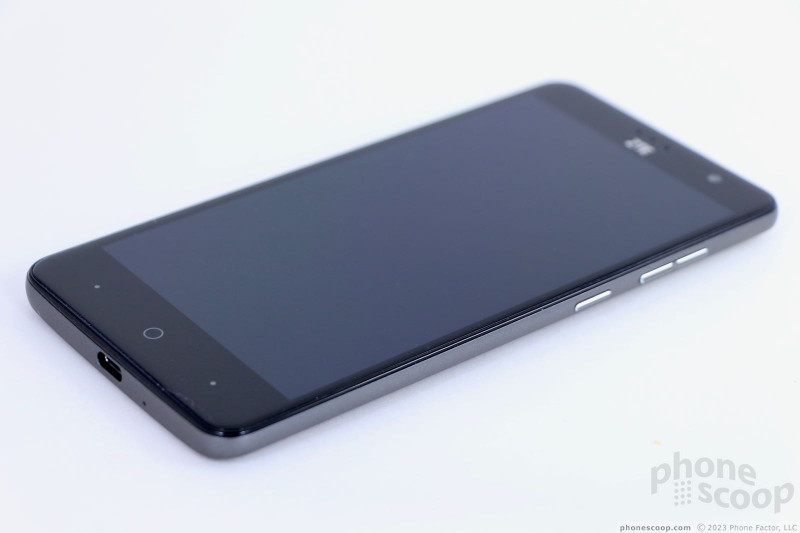















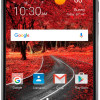 ZTE Debuts Grand X 4 for Cricket
ZTE Debuts Grand X 4 for Cricket
 Samsung Refreshes Galaxy S Series with S Pen, New Cameras
Samsung Refreshes Galaxy S Series with S Pen, New Cameras
 iPhone 14 Plus Offers a Big Screen For Less
iPhone 14 Plus Offers a Big Screen For Less
 ZTE Axon 30 Ultra Drops June 4 with Triple 64-Megapixel Cameras
ZTE Axon 30 Ultra Drops June 4 with Triple 64-Megapixel Cameras
 ZTE Grand X 4
ZTE Grand X 4




